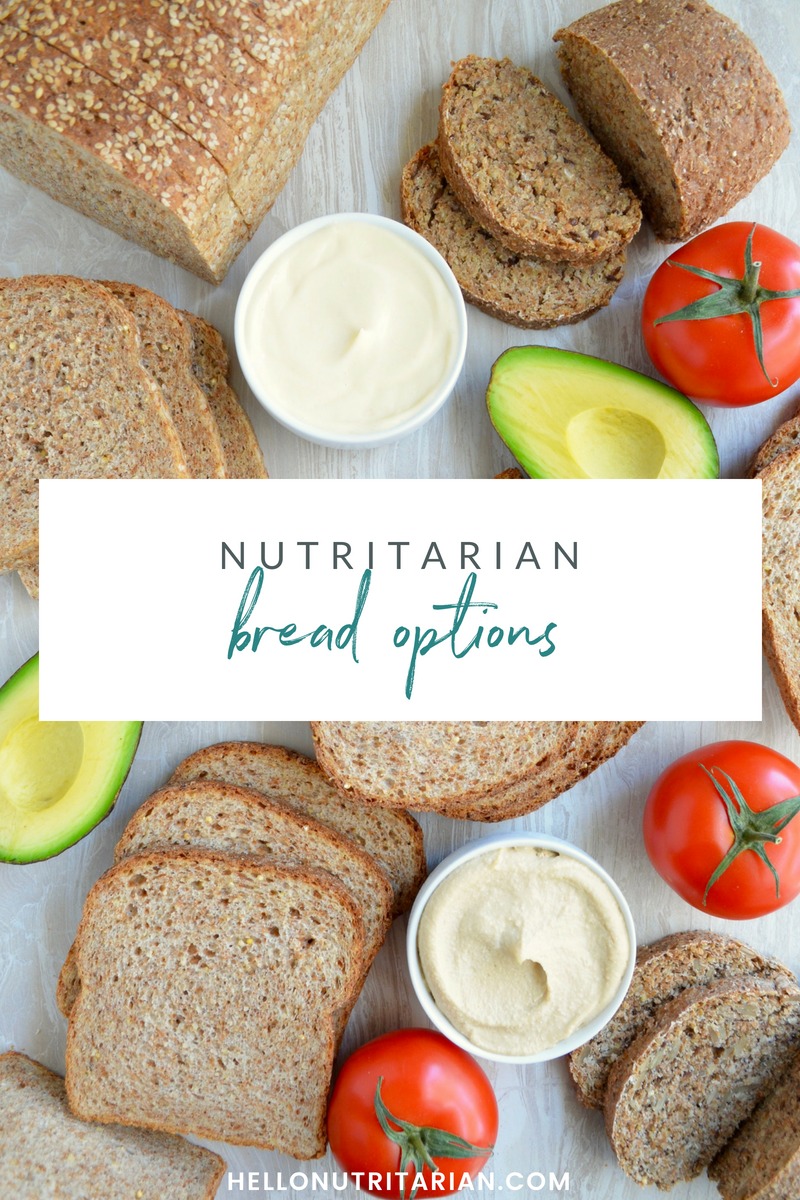 You have questions about eating bread while following Dr. Fuhrman’s nutritarian plan and I have answers!
You have questions about eating bread while following Dr. Fuhrman’s nutritarian plan and I have answers!
During Dr. Fuhrman’s Culinary Getaway last year I finally learned the lowdown on nutritarian bread options and I can’t wait to dish!
And this bread-411 isn’t just for nutritarians, if you’re living a high-nutrient, vegan, sos-free lifestyle, you’re going to want to stay tuned…
Here’s what we’ll cover:
- Can you eat bread on the eat to live plan?
- How much bread can you eat?
- What are the best breads to buy when you’re following a nutritarian lifestyle?
- What if I can’t find those suggested brands in my area?
With summertime picnics, BBQs and beach days stretched out before us, there’s no better time to get on the same page about nutritarian bread options.
Let’s do this!
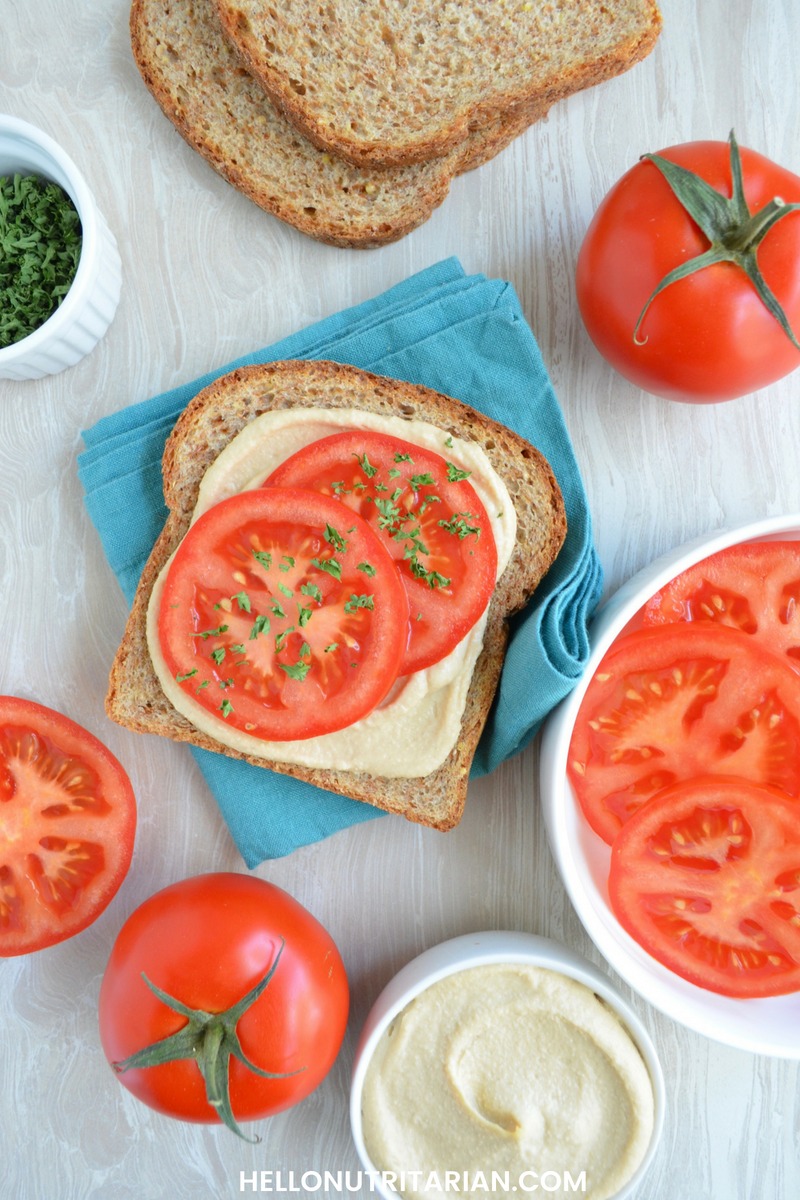 Bread & Nutrient-Density
Bread & Nutrient-Density
Bread is a processed food.
The goal of the nutritarian lifestyle is to eat the most nutrient-dense, un-processed, natural plant foods as possible.
Yeah, it’s no surprise to think that bread doen’t really fit in there.
Ground up wheat flour doesn’t occur in nature–I’m quite sure you’ve never stumbled into a field of wheat powder.
Wheat flour is created by an undoubtedly man-made process of ripping apart the bran and the germ (essentially removing the fiber) and grinding up the remaining interior of the wheat seed into a calorically-concentrated powder.
In The End of Dieting (p. 271) Dr. Fuhrman explains “the more finely ground the grain … the higher the glycemic load.” And as nutritarians, we want to steer clear of foods that our bodies are going to break down into simple sugars within minutes (what Dr. Fuhrman calls “fast foods” p. 81).
But the good news is Dr. Fuhrman doesn’t agree with the anti-wheat-and-gluten hype. Dr. Fuhrman has no problem with “intact whole grains such as boiled wheat kernels, sprouted wheat or wheat berries” (The End of Dieting, p. 57).
While there’s no doubt that whole wheat bread is more nutrient-dense and fiber-filled than white bread, that doesn’t mean you can let whole wheat bread play a major role in your nutritarian lifestyle.
Dr. Fuhrman ranks whole wheat bread at a level of 30 on his ANDI scoring system. Surprisingly higher than oatmeal (26) and white potatoes (28) and almost three times as nutritious as white bread (9).
So, where does all this information leave you on your nutritarian mission?
Yes, you can eat bread on a nutritarian diet. It should be whole wheat, minimally processed and make up a very small portion of your daily calories.
And that brings us to our next consideration…
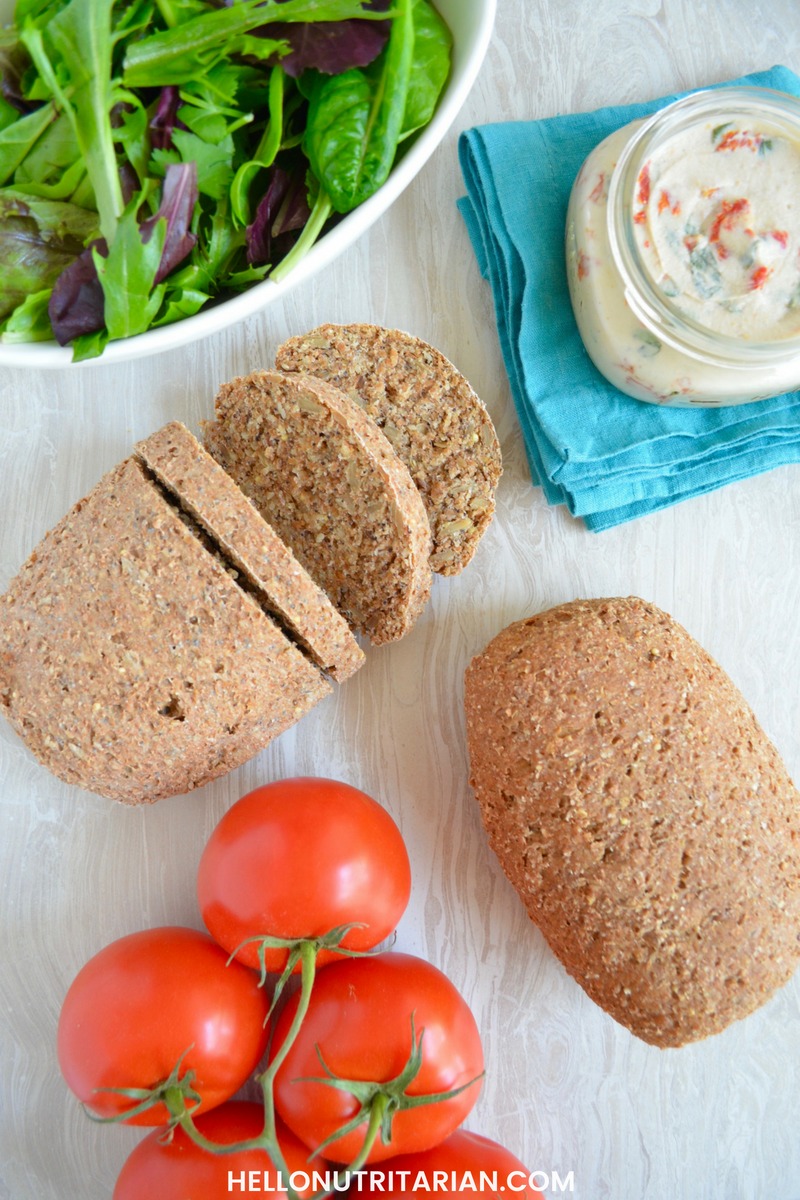 How Much Bread Can You Eat on the Nutritarian Plan?
How Much Bread Can You Eat on the Nutritarian Plan?
There are two plans I discuss here on Hello Nutritarian: (1) the Aggressive Weight Loss Plan which is what’s often meant when you hear “the 6 week challenge” or “the 6 week plan” and found in Eat to Live; and (2) the Basic Guidelines plan which is a less restrictive plan that Dr. Fuhrman outlines in The End of Dieting.
If you’re following the Aggressive Weight Loss Plan: Whole wheat bread should be counted under your 1 cup quota of whole grains for the day.
If you’re following the Basic Guidelines: Whole wheat bread should make up less than 10% of your daily calories while focusing on meeting your GBOMBS quotas daily.
Dr. Fuhrman suggests using 1 slice of whole wheat bread for your sandwiches and bean burgers (The End of Dieting, p. 264). At the Culinary Getaway last year Dr. Fuhrman said this is the best practice because you don’t want to use up your whole grain quota in one shot.
So, can you eat two slices of bread when you’re following the Aggressive Weight Loss Plan?
Yes, but you’re going to use up your whole grains serving for the day, or come very close to it.
To put it all into perspective, one cup of brown rice has 45 grams of carbohydrates and 1 cup of diced potato has 28 grams. Two slices of “Sesame” Ezekiel bread have 28 grams of carbohydrates, but we know bread is more processed than potatoes or brown rice.
The “whole grains” allotment issue has become more nuanced in recent Dr. Fuhrman appearances. Where he qualifies his seemingly draconian 1-cup whole grain rule by saying that some people have more trouble losing weight when they include too many foods in this category into their diets. And he concedes that when your activity levels are higher you can likewise level-up your “whole grain” intake.
In my opinion, it’s worth your effort to test which level of whole grain intake works best for you, your health, weight-loss goals and your activity levels.
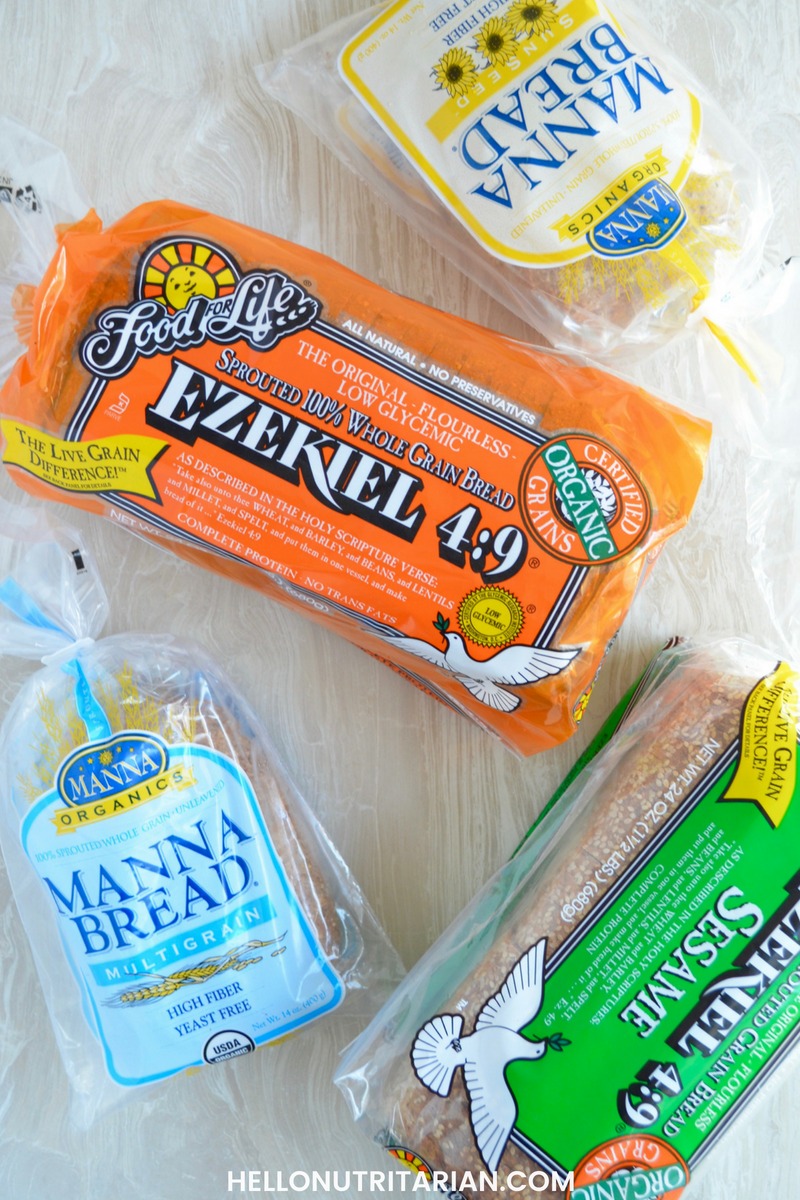 Which Kinds of Breads are Best When You’re Following a Nutritarian Diet?
Which Kinds of Breads are Best When You’re Following a Nutritarian Diet?
One word, eight letters…
Sprouted.
“Sprouted grain breads are made from whole wheat kernels or other whole wheat grains that are allowed to sprout and then are ground up. As far as nutrition goes, they are the best whole grain choice.” The End of Dieting, p. 271.
There are two brands that Dr. Fuhrman featured at the Culinary Getaway and in The End of Dieting, that you’re going to want to know about:
- Food for Life “Ezekiel” Bread
- Manna Organics Breads
These breads stand apart from the pack because they use such a variety of sprouted grains like: wheat, rye, millet, barley, oats, and even lentils! And probably more importantly is what they don’t have in their ingredient lists (sugar, sweeteners, oils or dairy).
I’ve found both these brands in the frozen section at Whole Foods and occasionally at Sprouts.
The Manna breads are a denser and moister bread with incredible taste and interesting flavor combinations like “Fig , Fennel & Flax,” and “Carrot Raisin.”
Ezekiel bread comes in with a bit more sodium than Manna, the Sesame variety has 80 mg per slice.
I recommend Ezekiel if you’re looking for a more traditional sandwich bread experience and Manna if you’re making an open-faced sandwich with avocado, nut and seed butters or chia jams.
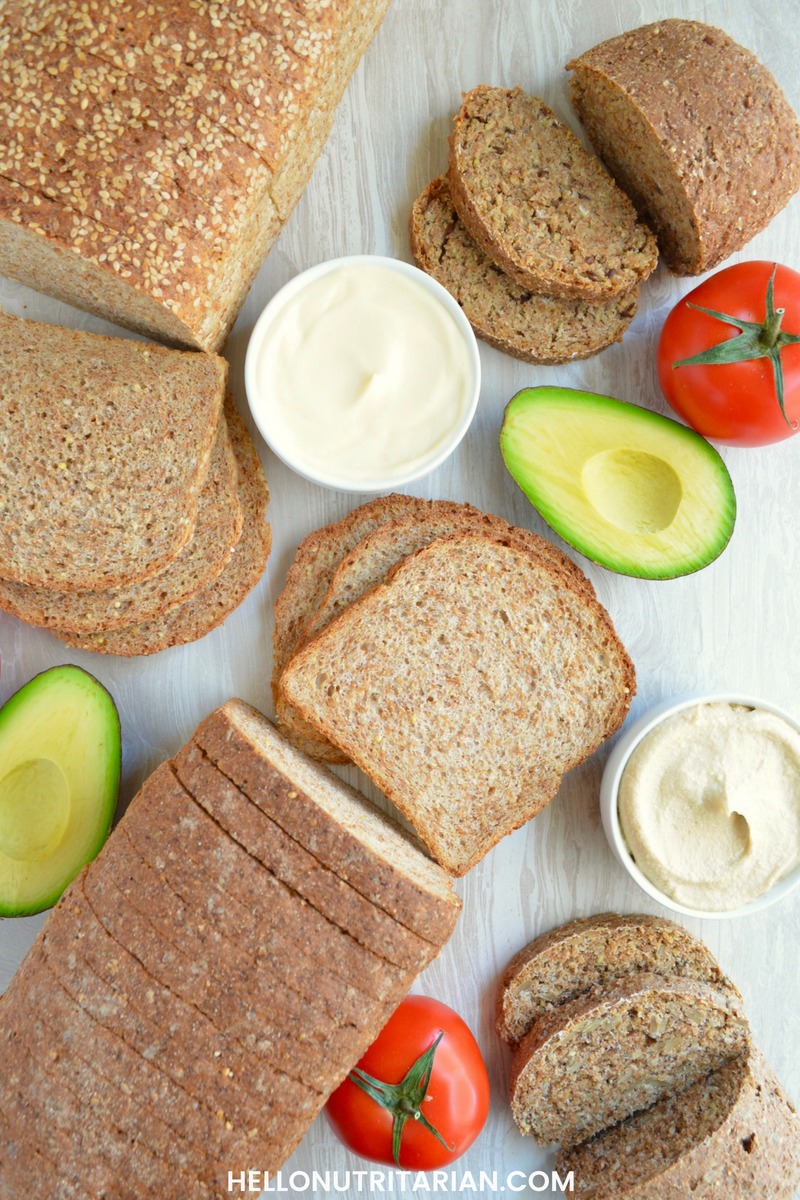 What Should I Do If I Can’t Find a 100% Compliant Bread?
What Should I Do If I Can’t Find a 100% Compliant Bread?
If you don’t have access to the recommended breads listed here, you want to find the best of the “less-than” bread choices.
Look for a brand that has the most of the following features:
- made from 100% whole wheat flour (the first ingredient listed and the only flour named in the ingredients)
- dairy free
- does not contain hydrogenated vegetable oil, partially hydrogenated oil or vegetable oil shortening
- preferably doesn’t have sugar, high fructose corn syrup or honey
- falls below 180 mg of sodium per slice (no more than 200 mg per slice)
- provides at least 3 grams of fiber
If a given bread meets all 6 of the criteria above, congratulations! You found yourself a mighty fine whole wheat bread choice and you don’t have to worry too much about what other “less-than” ingredients you may find in there.
I say not to worry because if you’re faithfully following a nutritarian diet you’re certainly not engaging in a bread-centric lifestyle.
Dr. Fuhrman also lists a few more commonly-found brands in The End of Dieting (p. 273) including Pepperidge Farm’s “100% Natural Whole Wheat” that contains both sugar and oil. So, you’ve heard it from the doctor’s mouth: you don’t have to be perfect with your bread selections!
Beware of white flour masquerading as wheat!
In The End of Dieting (p. 272), Dr. Fuhrman lists these as the following misleading terms the industry uses :
- wheat flour
- unbleached wheat flour
- enriched wheat flour
- stone-ground wheat flour or bran
- multigrain, five grain or seven grain
- 100 percent wheat flour or bran
More Hidden Health-Derailers in Bread
It’s very hard to find unadorned whole wheat breads on your supermarket shelf–believe me, I’ve tried!
So many seemingly healthy breads harbor sugars and other sweeteners, oils and even dairy products in their ingredient lists. One great example is “Dave’s Killer Bread” that lists organic dried cane syrup (sugar) as the third listed ingredient. Another is “Milton’s Original Healthy Multigrain Bread,” that used to be my go-to Trader Joe’s choice, which has brown sugar and honey listed in the top half of their ingredient list encyclopedia.
It’s no surprise that as a general rule of thumb you want to seek out whole wheat breads (and bread-like products e.g. pitas, wraps and tortillas) who boast the shortest ingredient lists.
This is a clear signal that the whole wheat bread is less processed with fewer man-made chemicals or vitamins added during the manufacturing process.
Okay, I think it’s safe to say that we’ve been thoroughly schooled in all things bread when you’re following Dr. Fuhrman’s nutritarian lifestyle or care about eating the most nutritionally-dense bread as possible!
Did you find this post to be a helpful resource for you? Please leave a comment below and let me know what you think!

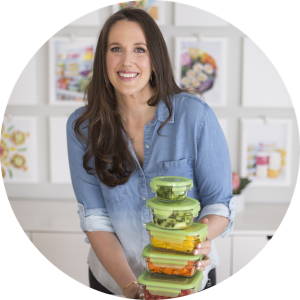
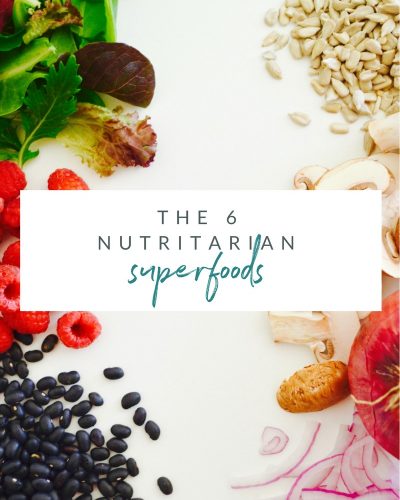
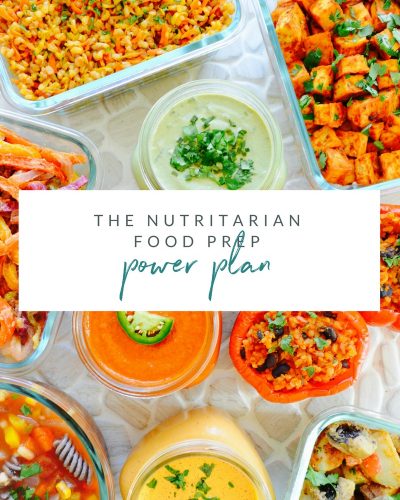
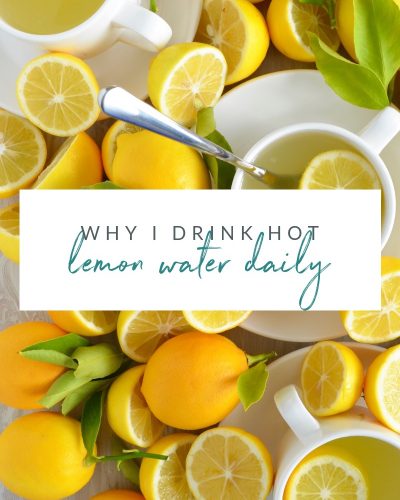
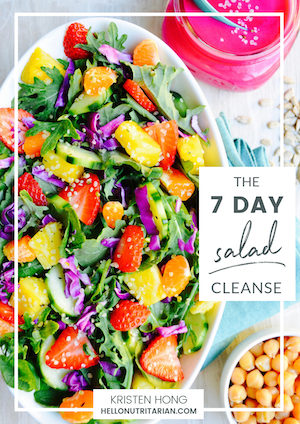


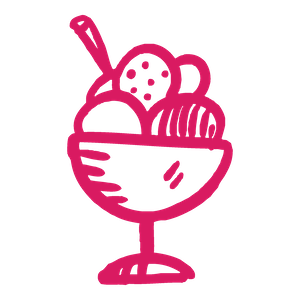


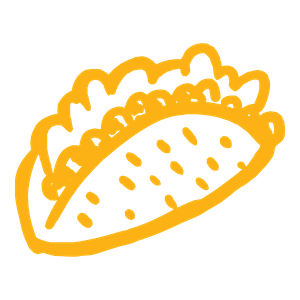


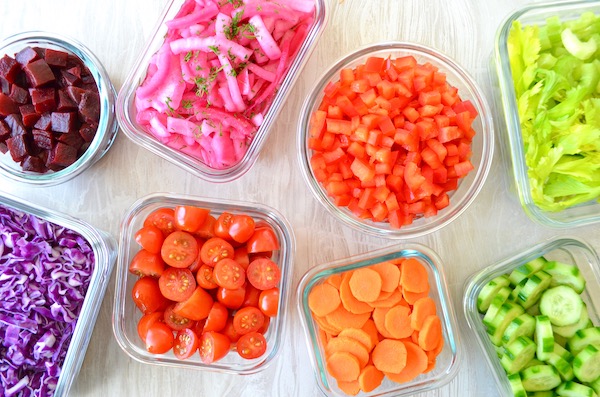
Ooh thank you for this! I was wondering about it. The grain restriction is the hardest part in my opinion and often makes me feel like I’m bad at it all!
Hi Alex,
I complete agree with you on the whole grain restriction being the hardest part!
If you fall short of any of the guidelines don’t ever feel bad–know that you are providing your body and mind with health-promoting foods and that can never be a bad thing!
xo, Kristen
Thank you for this very helpful information. I keep hearing about sprouted grain bread being he healthiest, but didn’t know where to find any. The whole grain bread selection at our local store leaves a lot to be desired; they’re all high in sugar. I’ve ended up using whole grain flatbreads, but they’re not ideal for everything. I did not know that sprouted grain breads might be available frozen, and will check my store’s freezer section next time I go. I was also glad to hear what Dr. Fuhrman has actually said about breads. Thanks again!
Hi Pat!
I’m so happy that you found this article helpful! Thank you for taking the time to leave such a lovely comment and letting me know you found this to be a great nutritarian resource on bread!
Yes, I hope you will find some amazing options in your store’s freezer section!
All the best,
Kristen
Thank you for this bread primer-excellent concise information in one place. I love it. And I love your blog and recipes. Thanks for all you do, Kristen!
So wonderful to hear you’re finding the site helpful on your journey, Rosemarie!
Thank you for taking the time to leave me a comment and let me know! Always inspires me!
xo, Kristen
This is great! I’ve been on the 6 week challenge and missing sandwich’s dreadfully!
So happy to help you eat your next on-plan sandwich, Andrea!!
xo, Kristen
I prefer to bank my own bread from scratch. Do you have an ETL-approved recipe? Maybe one I can throw into my bread machine?
Hi Lillian!
I don’t know of a homemade bread recipe offhand but if you do a quick Pinterest search I’m sure you’ll find a SOS-free (salt, oil, sugar-free) recipe that would work!
xo, Kristen
This is a question, rather than a comment.
Do you know of a recipe for homemade bread thst would be complient with this way of eating?
Hi Rebecca!
I don’t know of a homemade bread recipe offhand but if you do a quick Pinterest search I’m sure you’ll find a SOS-free (salt, oil, sugar-free) recipe that would work!
xo, Kristen
Oops! I’ve been using Daves’s killer good seed bread!
Hi Janine!
There are so many people I know who LOVE Dave’s Killer bread brand! Bread is one of those hard-to-find items that conform to Dr. Fuhrman’s recommendations–but like I said int he article if you’re only having a few slices a week, the impact is minimal!
xo, Kristen
Very helpful, thank you!
So glad you found it helpful, Hayley!
And thank you for taking the time to leave a comment to let me know!
xo, Kristen
Where can I find lists of approved pita bread brands, and tortillas?
Love your work – well-written and graphically awesome. 🙂
Food for Life is the brand that makes Ezekiel bread and they also make a whole grain tortilla and a corn tortilla. These are not very pliable , but are made from sprouted grain.
Completely agree with these recommendations, Julie!
Hi Brenda!
It all depends on what brands you have available in your area but if you follow the guidelines in this article they’ll be “approved” 😉
xo, Kristen
Kristen, have you ever tried this “Life-Changing Loaf of Bread”? I made it a few weeks ago and was surprised by how much I liked it (especially with a bit of peanut butter!). I try not to eat much bread as a general rule, but this has helped some of my occasional bread cravings. https://mynewroots.org/site/2013/02/the-life-changing-loaf-of-bread/
Hey thanks for linking that recipe Tracy! Hope you won’t mind if I throw in my own two cents, as I’ve been pondering whether that bread would be ETL-compliant or not. In the comments many people made the “Life Changing Loaf” and had good luck omitting the oil, maple syrup, and salt, which would make it more Nutritarian friendly. But it’s packed with nuts and seeds, so I think you would have to limit daily consumption to an ounce max per day on the 6-week-plan (hard to say how much that would come out to be in loaf form!) and be sure to use raw unsalted nuts and seeds when you make it. Not sure what Fuhrman’s stance on psyllium seed husks would be. Not sure if they count towards that 1 oz of seeds or if they are something else…
All that said, I’m thinking about making it for my mum– she’s not on the ETL plan, but she’s allergic to gluten and rice, so this makes for a good toast alternative for her!
Thanks so much for analyzing the recipe, Christine! I remember that Dr. Fuhrman said that psyllium husk could be used in baking! Hope you mom loves it!
xo, Kristen
Hi Tracy!
Thanks so much for sharing this recipe! I don’t make my own bread but if I ever decide to I’ll give this one a try!
xo, Kristen
Kristen, do you have any suggestions of bread recipes that would be compliant?
Hi Barbi!
I haven’t brave enough yet to try baking my own bread, lol! I think Pinterest would be a great resource to find a compliant recipe!
xo, Kristen
Good read! So how many cups would a slice of bread be? I’m not sure how one would measure that.
So happy to hear you found it helpful Melissa!
I would say two slices of Ezekiel bread would be meeting that 1 cup quota or very close to it!
xo, Kristen
This was helpful! Do you know of any recommended recipes to make sprouted compliant breads at home?
Hi Tori!
So happy to hear that you found this article helpful!! I’m sorry I don’t have any homemade sprouted bread recipes I personally use but you could probably find some good ones on Pinterest!
xo, Kristen
Food for Life makes the same Sprouted Grain bread with the orange label in NO SODIUM. Well, it’s labeled “Low Sodium” but the sodium nutritional data says 0.
Kristen Hong. Was wondering about homemade gluten free breads?
You say whole wheat is okay but doesn’t Dr. Fuhrman recommend whole grain bread? Love your site.
Hi Matt,
So happy to hear you’re enjoying the site!
You’re number one choice is to get a sprouted grain bread like Mana or Ezekiel. In The End of Dieting (p. 271) Dr. Fuhrman explains “the more finely ground the grain … the higher the glycemic load.” Dr. Fuhrman has no problem with “intact whole grains such as boiled wheat kernels, sprouted wheat or wheat berries” (The End of Dieting, p. 57).
Whole wheat would only be “okay” when readers don’t have access to whole grain, sprouted bread. Dr. Fuhrman ranks whole wheat bread at a level of 30 on his ANDI scoring system. Surprisingly higher than oatmeal (26) and white potatoes (28) and almost three times as nutritious as white bread (9). So, it’s still an improvement on SAD bread.
All the best,
Kristen
Just discovered your Instagram feed. Love your website and this post on bread is very helpful. I was curious about corn bread. I make mine with stone ground corn meal, baking soda, baking powder, salt and sour almond milk instead of buttermilk. No sugar, flour or eggs. I love it in veggie soup and black bean chili. I can do without but I’m curious. Thanks for all the great info on this site!
Hi Cate,
Oh your cornbread sounds amazing! It would fall under the 1 cup limit of whole grains per day. I don’t know what the ratio to cornmeal to regular corn is but I’d find that out to see what kind of portion would be equivalent if you’re looking to be 100%!
Kristen
Your website will not accept my email address to subscribe
Hi Vanessa,
I’m so sorry to hear that you’re having trouble subscribing! If you take a look at the bottom of this page it goes through a bit of troubleshooting!
Hi Vanessa,
I’m so sorry to hear that! If you’re looking to get the 7 Day Salad Cleanse I can send it directly to you, just send an email to: k4mediagroup@gmail.com
I needed this article today to enjoy my goal and Saturday morning treat!! thanks for your clear articles!
SO happy to hear that you found it helpful, Lisa!
And thanks so much for taking the time to let me know!
xo, Kristen
I’m SO happy that you found it helpful, Lisa!
Any suggestions for gluten-free compliant bread products? Homemade or store-bought?
Hi Marcy,
I believe that the Ezekiel brand has a line of gluten-free English muffins and breads. I would try those out!
Excellent discussion…thanks for sharing this! Question: I see you offer soy-free options in your power prep program, do you offer gluten-free alternatives as well? I’m interested in the program, but I have celiac disease.
Hi Ellen,
Thanks for your interest in the program! Yes, I do have soy-free substitution recipes for all 6 weeks in the program. For gluten-free we have had many readers who just swap out the occasional pita bread recipes with a gluten-free wrap.
xo, Kristen
Hi Ellen,
We have had many people join who are gluten-free. The only item we use int he program with gluten are the occasional pita breads (on weeks 1, 5 and 6). So, the gluten-free participants substitute those with a gluten-free wrap or tortilla brand of their choice.
Thanks so much for your interest in the program!
Best,
Kristen
Hello, thank you so much for this article. So maybe this is a cultural thing, but I’m German and I have a sourgh dough starter in my fridge. It consists of organic whole grain rhy and lots of good yeasts and bacteria. I bake a different loaf of bread every one or two days for the whole family, of cause. I have a grain mill, where I can decide how coarsely I want my gain ground. I some times include seeds, but not always. I use all kinds of whole grains. The fermentation makes the minerals more readily available to the body so they can be better absorbed. I really don’t think that bread made from just grains and water is that wrong. Of cause it should be eaten in moderation in order to also be able to eat other foods. So if any of you want to try it out; making a sourdough starter is very easy.
Hi Jess! Wow, that sounds absolutely incredible! I really made this a resource for people who don’t have the time to bake themselves (I’m in that camp right now but hope one day that will change).
I think if you are able to control so much of the process and as you said you’re focusing on those healthful foods then you can’t go wrong! Thanks so much for sharing your experience!
Hi, Kristen! I have been following Nutritarian principles a few years now. I am also certified as a Nutritarian Health Coach. I love your website – now I don’t have to create one! I can just send folks here. I have developed a quick bread recipe that is gluten free (I’m genetically sensitive), nutrient dense, delicious, and holds together really well that I call Fiber Bombs. Initially I made buns — hence the “bombs” — and I have used the same recipe to make bratwurst buns and a loaf. The flours chosen are nutrient dense for us humans plus high fiber and resistant starch to feed our gut microbiota. My clients who have tried them love them and even their kids like them. I would be happy to share the recipe! Let me know how best to do that.
So lovely to meet you Kamori! Your bread recipe sounds delicious and I’d love to know more! Please email me and we can go from there: k4mediagroup@gmail.com
By the way, Dave’s Killer Bread PowerSeed variety, for example, does not list sugar, but the “organic fruit juices” is code for sugar — doesn’t it just sound so healthy and natural? Don’t be fooled like I was. Once I dropped commercial bread from my diet I lost 10 pounds in a year without making any other changes! The power of sugar and flour to raise blood sugar levels is not to taken lightly!
Thank you so much for sharing that with us Kamori! There are so many deceptive practices with sugar that why I always look at added sugars to see the plain truth!
Very helpful explanation! I appreciate being able to occasionally have a sandwich!
So happy to hear that Candy!
Wondering about gluten free options….are these possible? Do you have suggestions?
Hi Sandy, I know that the Ezekiel brand makes gluten-free English muffins. I have not personally tried them but I’ve seen them at the stores. Sorry I don’t have any personal recommendations for you but I’m sure there are lots of great gluten-free bloggers out there you could check out!